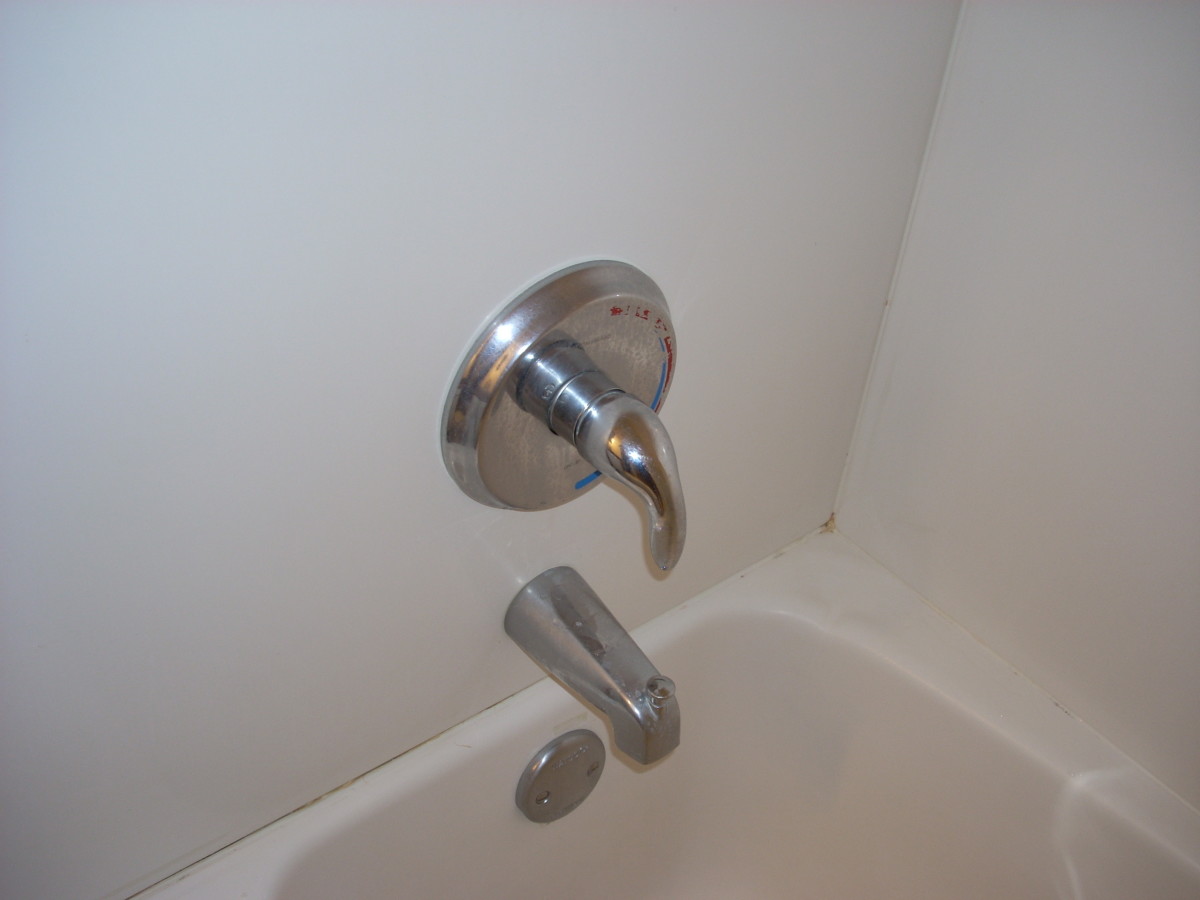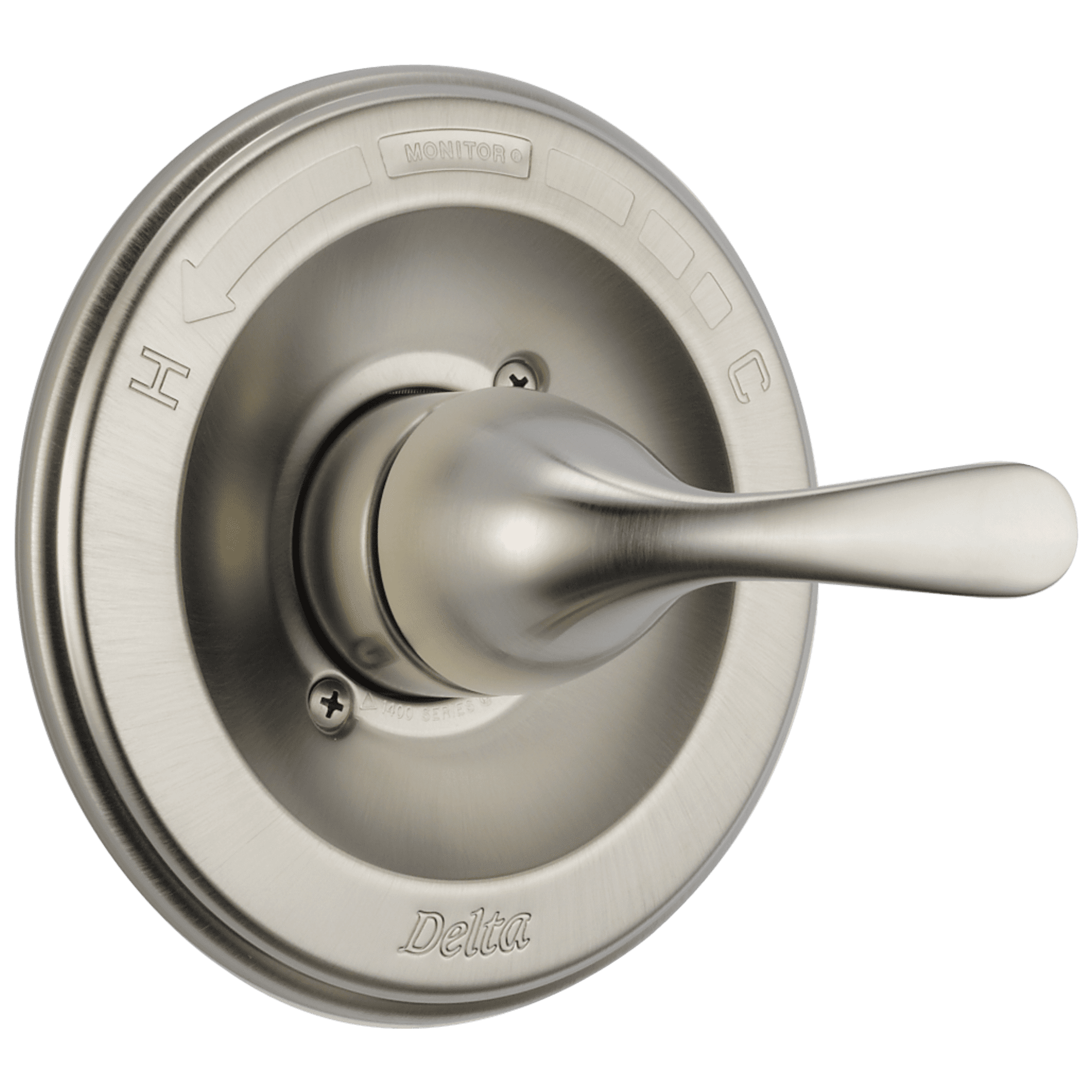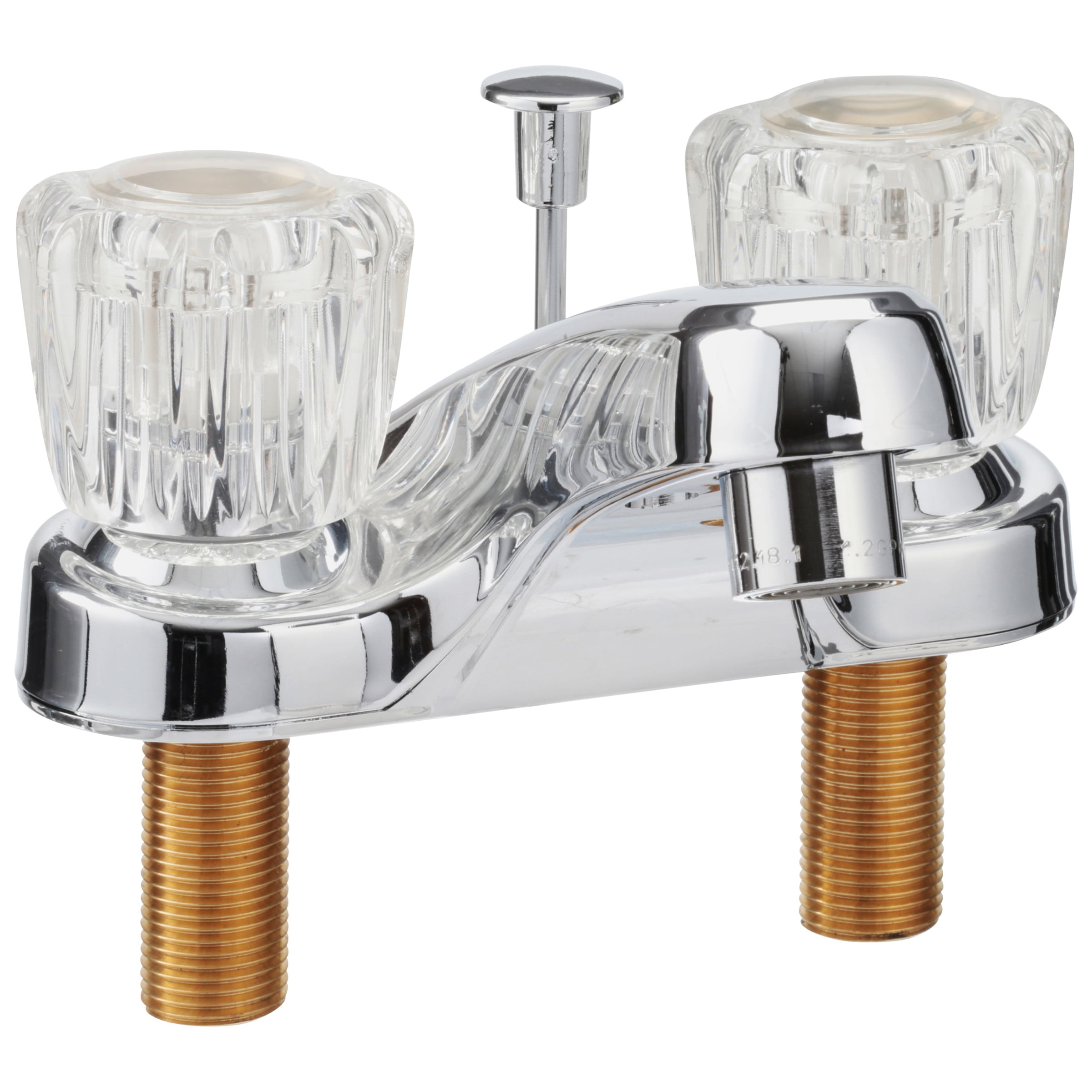Functionality and Control: Single Vs Double Handle Bathroom Faucet

The choice between a single-handle and a double-handle bathroom faucet often boils down to personal preference and the specific needs of the user. Both types offer distinct advantages and disadvantages in terms of ease of use and control, particularly when it comes to temperature regulation and water flow adjustment.
Ease of Use and Control
The single-handle faucet simplifies water control by combining hot and cold water into a single lever. This design offers intuitive and effortless operation, making it a popular choice for many users.
- Single-Handle Faucets: With a single lever, you can effortlessly adjust both water temperature and flow simultaneously. This streamlined design makes it easy to achieve the desired water settings with a single hand, even for those with limited dexterity or mobility issues.
- Double-Handle Faucets: Double-handle faucets require separate handles for hot and cold water control. This design allows for more precise temperature adjustments, but it can be more challenging to operate, especially for individuals with limited hand strength or coordination.
Temperature Regulation
The single-handle design offers a more straightforward approach to temperature control.
- Single-Handle Faucets: The single lever provides a smooth transition between hot and cold water, making it easy to achieve the desired temperature. This feature is particularly beneficial for individuals who may find it challenging to coordinate two separate handles.
- Double-Handle Faucets: Double-handle faucets require more coordination and precision to achieve the desired temperature. However, this design can provide a more nuanced level of temperature control, allowing users to fine-tune the water temperature to their exact preference.
Water Flow Adjustment
The control over water flow varies between the two types of faucets.
- Single-Handle Faucets: Single-handle faucets typically have a built-in flow restrictor that limits the maximum water flow. This feature helps conserve water and prevent accidental scalding. While this can be beneficial for water conservation, it may not provide the same level of control over water flow as a double-handle faucet.
- Double-Handle Faucets: Double-handle faucets offer greater control over water flow. By adjusting the cold water handle, users can fine-tune the flow rate to their liking. This level of control can be beneficial for tasks like rinsing dishes or filling a large pot.
Aesthetics and Design

The visual appeal of a bathroom faucet is a significant factor in the overall aesthetic of the bathroom. Both single-handle and double-handle faucets offer a wide range of styles and finishes to complement various bathroom designs.
Faucet Styles and Finishes
The styles and finishes available for bathroom faucets play a crucial role in determining the overall aesthetic of the bathroom. Single-handle and double-handle faucets offer a variety of options to suit different design preferences.
Single-Handle Faucet Styles
Single-handle faucets are known for their sleek and modern designs. They are available in various styles, including:
- Contemporary: Characterized by clean lines, minimalist forms, and geometric shapes, contemporary single-handle faucets often feature square or rectangular designs.
- Modern: Similar to contemporary styles, modern single-handle faucets emphasize simplicity and functionality. They may feature curved or rounded designs with a focus on smooth lines and minimalist details.
- Transitional: Blending elements of traditional and modern design, transitional single-handle faucets offer a balance between classic and contemporary aesthetics. They may feature slightly more ornate details than modern faucets but retain a clean and streamlined look.
Double-Handle Faucet Styles
Double-handle faucets offer a more traditional and classic look. They are available in various styles, including:
- Traditional: Traditional double-handle faucets often feature ornate details, such as cross handles, intricate designs, and decorative accents. They are commonly found in bathrooms with a vintage or antique aesthetic.
- Victorian: Victorian double-handle faucets are characterized by elaborate details, including intricate curves, decorative knobs, and elaborate designs. They often feature a more ornate and luxurious appearance.
- Industrial: Industrial double-handle faucets often feature a rugged and utilitarian aesthetic. They may have exposed pipes, metal accents, and a focus on functionality.
Faucet Finishes
Both single-handle and double-handle faucets are available in a variety of finishes to complement different bathroom styles and color palettes. Popular finishes include:
- Chrome: A classic and versatile finish that is known for its durability and resistance to corrosion. Chrome faucets offer a polished and reflective look that complements both modern and traditional bathrooms.
- Brushed Nickel: A warm and sophisticated finish that provides a subtle, brushed texture. Brushed nickel faucets offer a more contemporary look and blend well with various bathroom styles.
- Oil Rubbed Bronze: A rich and elegant finish that creates a rustic and antique look. Oil rubbed bronze faucets are often used in bathrooms with a traditional or farmhouse aesthetic.
- Matte Black: A bold and contemporary finish that adds a touch of drama and sophistication to the bathroom. Matte black faucets are a popular choice for modern and minimalist bathrooms.
Visual Impact of Single-Handle vs. Double-Handle Faucets
The visual impact of single-handle and double-handle faucets can vary depending on the bathroom’s overall style and design.
Single-Handle Faucets in Different Bathroom Settings
Single-handle faucets are often preferred in modern and contemporary bathrooms due to their sleek and minimalist designs. They can create a clean and uncluttered look, particularly in smaller bathrooms. In larger bathrooms, single-handle faucets can contribute to a spacious and airy feel.
Double-Handle Faucets in Different Bathroom Settings
Double-handle faucets are commonly used in traditional and classic bathrooms. They can add a touch of elegance and sophistication to the space. In bathrooms with a vintage or antique aesthetic, double-handle faucets can enhance the overall ambiance.
Faucet Styles and Single vs. Double Handle Options
The following table illustrates the relationship between popular faucet styles and the single vs. double handle options:
| Faucet Style | Single-Handle | Double-Handle |
|---|---|---|
| Contemporary | ✓ | |
| Modern | ✓ | |
| Transitional | ✓ | ✓ |
| Traditional | ✓ | ✓ |
| Victorian | ✓ | |
| Industrial | ✓ | ✓ |
Installation and Maintenance

Installing and maintaining your bathroom faucet is essential for its longevity and functionality. While both single-handle and double-handle faucets offer similar functionalities, there are slight differences in their installation processes and maintenance requirements.
Installation Process
The installation process for both types of faucets involves similar steps, but there are subtle differences in the way the handles are connected and the water supply lines are attached.
- Single-handle faucets typically have a single cartridge that controls both hot and cold water flow. The installation involves connecting the faucet to the water supply lines, securing the faucet to the sink, and attaching the handle to the cartridge.
- Double-handle faucets have separate valves for hot and cold water. The installation process involves connecting the individual valves to the hot and cold water supply lines, securing the faucet to the sink, and attaching the handles to the valves.
Maintenance Tasks, Single vs double handle bathroom faucet
Regular maintenance is crucial to ensure your faucet’s smooth operation and prevent leaks. Common maintenance tasks include:
- Cleaning: Regular cleaning helps prevent mineral buildup and ensures smooth operation. Use a mild cleaner and a soft cloth to wipe down the faucet’s exterior. Avoid abrasive cleaners that can damage the finish.
- Cartridge replacement: Over time, the cartridge in single-handle faucets can wear out, leading to leaks or difficulty in controlling water flow. Replacing the cartridge is a relatively straightforward process that involves removing the old cartridge and installing a new one.
- Valve replacement: Double-handle faucets have separate valves for hot and cold water. These valves can wear out over time, causing leaks or difficulty in controlling water flow. Replacing the valves is a relatively straightforward process that involves removing the old valves and installing new ones.
- Leak troubleshooting: Leaks can occur in both single-handle and double-handle faucets. The most common causes of leaks include worn-out cartridges or valves, loose connections, or damaged O-rings. Troubleshooting involves identifying the source of the leak and replacing or tightening the faulty components.
Cartridge Replacement in a Single-Handle Faucet
Replacing the cartridge in a single-handle faucet is a common maintenance task that can be done with basic tools. Here’s a step-by-step guide:
- Turn off the water supply: Locate the shut-off valves for the hot and cold water lines supplying the faucet and turn them off.
- Remove the handle: Most single-handle faucets have a set screw on the handle that needs to be loosened to remove the handle. Use a small screwdriver to loosen the set screw and remove the handle.
- Remove the cartridge: Once the handle is removed, you should see the cartridge. Depending on the faucet model, the cartridge may be held in place by a retaining clip or a nut. Use a wrench or pliers to remove the retaining clip or nut and pull out the cartridge.
- Install the new cartridge: Insert the new cartridge into the faucet body and make sure it is properly seated. Reinstall the retaining clip or nut and tighten it securely.
- Reinstall the handle: Reattach the handle to the faucet and tighten the set screw.
- Turn on the water supply: Turn the water supply back on and check for leaks.